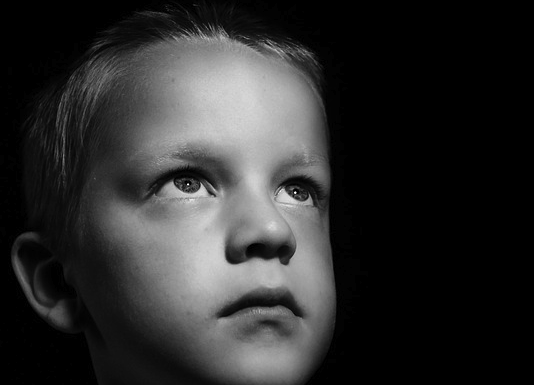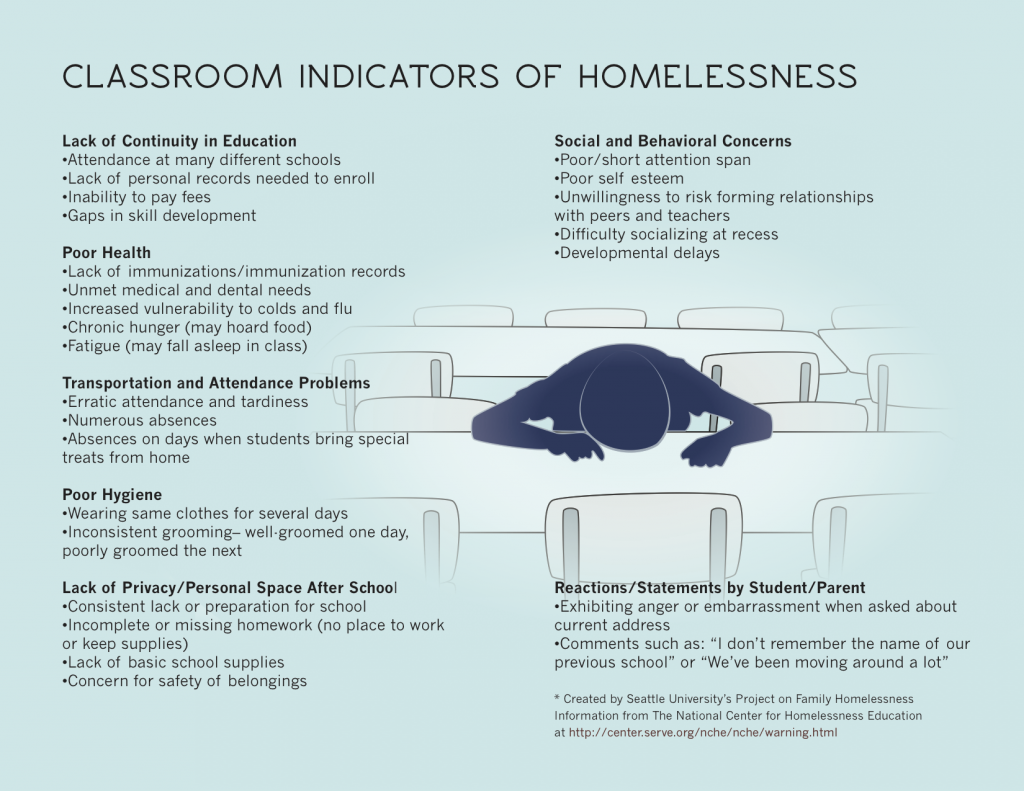As the new school year starts, teachers face many challenges. So do children who are dealing with homelessness and poverty. And this couldn’t be truer than for impoverished children who are also in need of special education services. With parents focusing on day-to-day survival and too busy to consistently advocate for their needs, children who are homeless may fail to receive the services they need to succeed in school.
The result is that children already harmed by their living circumstances can fall even further behind. Therefore, adults who work with children in poverty and homelessness need to understand how this environment influences academic skill and emotional development, and how it relates to special education needs.
So, we present this seven-part series on how homelessness and poverty affect the development of children, and how this can show up in the education system. Thanks to Perry Firth for contributing this important series.
Written by Perry Firth, project coordinator, Seattle University’s Project on Family Homelessness and school psychology graduate student
Hungry and tired, the boy squirms in his seat. Surrounded by classmates studiously working, he stares out the window, one leg anxiously thumping the side of his desk. In second grade, he has already experienced the types of stressors that dull the colors and geographies of childhood into shades and valleys of gray.
His teacher, a young enthusiastic woman standing at the front of the class, observes him. His book is opened to a happy story, but neglected. There are dark circles under his eyes, and he startles easily.
She has noticed that he seems both alienated from his peers and clearly desperate to fit in. Unfortunately, the basic social skills required to gain social acceptance don’t come easily to him.
Regulating his emotions is also a struggle. Prone to outbursts, he doesn’t communicate his needs in grade-appropriate ways.
He accumulates school absences and tardies the way other students accumulate new clothes.
Having noticed that he is also struggling in reading, she is beginning to wonder if he may have some sort of disability.
Truth is, the boy is homeless.
This account is a fictional, yet realistic, description of how a child’s homelessness may manifest in the classroom. Indeed, these struggles and outcomes related to homelessness could typify any of the more than one million homeless school children living in America today, or the 30,000 school children who are homeless in Washington state.
This scene also captures the confusion that teachers may encounter as they attempt to pinpoint the reasons that a child is struggling in school without understanding their housing situation. The teacher in this story — like many real ones — is confronted with a difficult challenge: How to differentiate whether a child is struggling because he is homeless, or because he has a disability (or both).
This problem of differentiation brings up many questions:
- Does the child struggle to read because she’s missed so many school days, or because she has a learning difference? How has homelessness and poverty impacted her cognitive and emotional development in general?
- How does this influence her success in the school environment?
These are all good questions. Yet, as we often encounter when seeking to tease apart environmental and genetic influences, the answers are layered, nuanced and ecological.

What to expect in this series
This seven-part blog series seeks to answer the last question: the impact of homelessness on academic success. We’ll explore how homelessness and poverty affect the cognitive, emotional and behavioral development of children. Given that success in school is so essential to a child’s future, poverty’s influence on academic success will also be a major theme.
We’ll pay explicit attention to what school professionals and child advocates need to know, including:
- The harmful factors that accompany homelessness and poverty, like frequent school moves and low quality housing.
- How homelessness and poverty can create toxic chronic stress, and how this stress impacts the brain and can impair a child’s ability to develop normally.
- How the stress of homelessness influences academic achievement and learning.
- The unique issues school professionals face as they evaluate and try to provide services to children who are homeless.
Intersection between special education and homelessness
We’ll also delve into to the special education category “Emotional Disturbance.” Children receiving services under this category struggle with many issues, like emotional-behavioral disorders and high drop-out rates. In turn, this hinders their ability to find secure employment as adults.
Unfortunately, children who are homeless and/or living in poverty are more likely to need special education services – but don’t always get them. Therefore, we’ll highlight how trauma, scarcity and stress can affect special-education placement, and contribute to the cycle of poverty.
Useful strategies and connecting to policy
In the last two posts in the series, we will provide practical strategies that school professionals can use to ensure that homeless children get the special education services they need. Finally, we’ll give an overview of important policy and legislation that can influence how schools provide these services.

Read all posts in this series
- Part One | Hungry, Scared, Tired and Sick: How Homelessness Hurts Children
- Part Two | Homelessness, Poverty and the Brain: Mapping the Effects of Toxic Stress on Children
- Part Three | Homelessness and Academic Achievement: The Impact of Childhood Stress on School Performance
- Part Four | More Barriers to Learning: Homelessness and the Special Education System
- Part Five | A Web of Risk: Homelessness and the Special Education Category “Emotional Disturbance”
- Part Six | McKinney-Vento, IDEA and You: Strategies for Helping Homeless Children With Disabilities
- Part Seven | Innovating Toward Academic Success: Empowering Students Who Are Homeless or Living With Toxic Stress
What you can do
- Share these posts with your friends and colleagues to increase their impact.
- Read related Firesteel posts, like “No One Would Have Known I Was Homeless,” in which a young woman gives a first-hand account of what it was like to be homeless in high school.
- Download the brochure on helping homeless students, “Understanding Homeless Students’ Educational Rights,” newly updated for 2014-2015. This is a fantastic resource for students, parents, teachers and social workers, published by the Seattle/King County Coalition on Homelessness.
- If you’re a McKinney-Vento Homeless Liaison, teacher or school staff member in Washington state, attend the upcoming training sessions hosted by Washington state’s Office of the Superintendent of Public Instruction, Oct. 8 in Spokane or Oct. 9 in Seatac (registration required).


Pingback: New Infographics on Childhood Homelessness, Education, and Child Development | Seattle University Project on Family Homelessness()
Pingback: Gregory Smith()
Pingback: Moving Hearts, Changing Minds About Homeless Students: NAEHCY’s Annual Conference | Seattle University Project on Family Homelessness()
Pingback: Picturing Child Homelessness: The Challenges Behind “The Big Brain” | Seattle University Project on Family Homelessness()
Pingback: Seattle University Project on Family Homelessness()